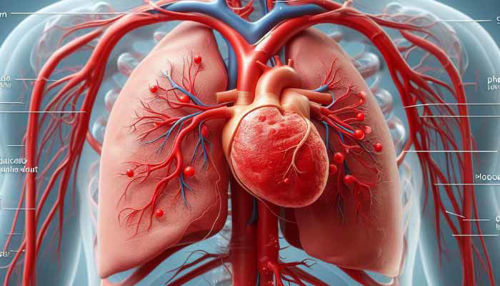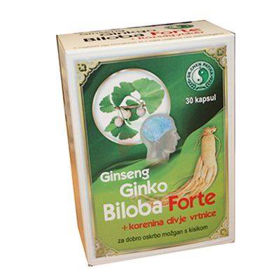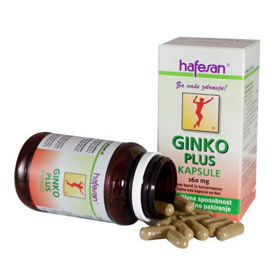If anything disrupts the blood supply to the brain, the consequences are usually severe: control of movement, perception, speech and other mental or physical functions are impaired, and the affected person may lose consciousness. Cerebral blood flow disorders are called strokes. We distinguish two basic types; both can be fatal.
STROKE: General | Symptoms | Atlas of Endangered Veins | Causes | Diagnostic Procedures | Treatment | Prevention | Questions and Answers | Sources/references
Approximately three-quarters of all strokes are the result of an interrupted flow of oxygenated blood to the brain. This type is called an ischemic stroke, and it is caused by either a thrombus (a blood clot that forms in a vessel) or an embolus (a clot that is carried by blood from elsewhere and gets stuck in a vessel).
This type of stroke is often preceded by transient ischemic attacks (TIAs) — periods of insufficient blood flow that can cause sudden weakness, inability to speak, double vision or dizziness. After a TIA, circulation and emergency oxygenation are quickly restored so that permanent neurological damage does not develop. In a stroke, however, the interruption of blood supply lasts so long that the brain cells die, causing irreversible neurological damage.
Image: We distinguish two basic types of stroke.
.jpg)
The other basic type of stroke is hemorrhagic stroke, also called cerebral hemorrhage. It develops when a brain aneurysm ruptures or when a weakened or inflamed blood vessel in the brain begins to leak. The increase in pressure caused by the rush of blood kills the cells either directly or by preventing normal blood flow to the affected area. As a rule, the result is a violent headache, sometimes followed by loss of consciousness. In contrast to an ischemic stroke, which patients usually survive, a stroke due to severe bleeding is about 80% fatal.
Video content: Life before and after a stroke: Jan Šilec at TEDxFDV.

Due to better treatment and greater public awareness of the dangers of high blood pressure, overall stroke mortality is decreasing in developed countries. In our country, awareness is unfortunately still lacking and stroke remains among the leading causes of death, along with heart disease and cancer. It is also a leading cause of disability. In the USA, for example, the second most common cause of dementia, after Alzheimer's disease.
Recovery after a stroke depends on the location and extent of brain damage. Some patients make a full recovery, but in the vast majority of cases, a stroke causes permanent physical or mental disability. Weakened patients after a stroke are also more susceptible to infections, such as pneumonia. In addition, depression often occurs after a stroke, and if left untreated, can greatly hinder recovery.
Symptoms
Symptoms include:
- Sudden loss of vision, strength, coordination, perception, speech, or ability to understand speech. These symptoms may become more pronounced over time.
- Impairment on one side of the body, e.g. numbness of one side of the face or blindness of one eye.
- Sudden loss of balance, which may be accompanied by vomiting, nausea, hiccups or difficulty swallowing.
- Sudden and severe headache, quickly followed by loss of consciousness - these are the signs of a stroke due to bleeding.
Consult your doctor if:
- you or someone else develops signs of a stroke. If symptoms go away quickly, it could be a transient ischemic attack (TIA), a brief interruption of blood flow to the brain that is a common precursor to stroke. Do not ignore it, because medical intervention is necessary.
Atlas of Endangered Veins
A view of the brain from the left side shows the five large vessels that supply this organ with blood. Rupture or blockage of any of them or their branches can cause a stroke: the tissue dies due to insufficient oxygen supply.
Image: The vast majority of strokes affect people over the age of 60.
.jpg)
Brain damage occurs. Depending on the affected part of the brain, the consequences of a stroke can be paralysis, speech disorders, vision loss andother symptoms.
Causes
Ischemic stroke occurs when a blood clot blocks the flow of blood to part of the brain. The blocked vessel is already narrowed due to the long-term accumulation of deposits, which is the result of atherosclerosis. The clot that permanently blocks it can form there or travel from elsewhere as an embolus made of blood, plaque, or some other substance. Blood clots that trigger a stroke can form when blood flow is slowed. After a heart attack, e.g. clots form on the affected wall of the heart due to slower blood flow in that area.
Hemorrhagic strokes are most often the result of rupture of weakened arteries or aneurysms in the brain. Arteries are sometimes weak from birth, but more often they weaken due to the burden of high blood pressure. In addition, a hemorrhagic stroke can be the result of leaking arteriovenous malformations, a congenital network of abnormal vessels in the brain.
Video content: Stroke: causes, risk factors, treatment and prevention.

The vast majority of strokes affect people over the age of 60. Men have strokes more often than women. Hemorrhagic strokes are more common among younger people, and ischemic strokes among the elderly. The main risk factors for stroke that can be influenced are high blood pressure, high cholesterol (especially high LDL cholesterol), a sedentary lifestyle, obesity, abuse of stimulants (eg amphetamines), smoking, taking birth control pills and stress.
The frequency of stroke is higher in people who have ever had a TIA, have any heart disease (especially a recent heart attack, atrial fibrillation, or mitral valve disease), excessive blood clotting, or diabetes.
Diagnostic procedures
If a patient has symptoms similar to a stroke, the neurologist's task is not only to confirm the symptoms, but also to determine what type of stroke it is, to define its location and extent of brain damage. The treatment decision depends on all of this. As a rule, the doctor performs diagnostic procedures quickly, because immediate treatment limits the neurological damage.
Image: Computed tomography and magnetic resonance imaging are key investigations.
.jpg)
The doctor first examines the patient and, if possible, asks everything about his health in the past. A routine examination includes an examination of the fundus of the eye, auscultation of unusual murmurs over the heart and carotid arteries, measurement of blood pressure and heart rate, and determination of strength, perception and neurological reflexes. Computed tomography and magnetic resonance imaging are the most important investigations in stroke.
Treatment
Acute stroke treatment should be left to conventional medicine, but many alternative methods can contribute to stroke prevention and recovery.
Conventional medicine
Stroke patients are immediately admitted to the hospital, where they are often given medication to prevent further brain damage. Ischemic strokes are usually treated with an anticoagulant called heparin. Emergency surgery may be required to remove blood that has accumulated in the brain due to bleeding, or to ligate a ruptured artery or aneurysm to prevent further bleeding.
After the critical period has passed, he remains in the hospital until his condition is stable. Upon discharge, the patient and doctor carefully consider the necessary measures for recovery and prevention of future strokes. These usually include changes in diet and lifestyle, permanent medication, rehabilitation treatment, and may also include surgery to eliminate critical narrowing of the arteries.
Individuals at risk of hemorrhagic stroke should take care of normal blood pressure: if possible, only by adjusting the diet and lifestyle, if necessary, but also with medication. These people should also not take acetylsalicylic acid or ibuprofen. In patients who have suffered a hemorrhagic stroke from a ruptured aneurysm, other small aneurysms can sometimes be found and removed or ligated. Unfortunately, nothing can be done about congenital weakness of the arteries.
Picture: Stroke patients are immediately admitted to the hospital.
.jpeg)
In order to prevent an ischemic stroke, some patients are first advised totaking acetylsalicylic acid. If this proves ineffective, the doctor will probably prescribe ticlopidine, another anti-clotting medicine, or, as a last resort, warfarin. People who are particularly at risk of ischemic stroke due to an existing heart disease should receive heparin for acute symptoms, and warfarin for long-term treatment.
For some patients, surgery is considered to prevent ischemic stroke in the future. The most common procedure is an endarteriectomy, which removes plaque from the large neck arteries that lead to the brain. An experimental method called cerebral angioplasty is used to widen narrowed cerebral arteries. In addition to urgent medical intervention and subsequent follow-up, the third key component of stroke treatment is rehabilitation.
Immediately after a stroke, other areas of the brain can make new neurological connections and to some extent compensate for the loss due to the damage. Intensive rehabilitation basically tries to help this happening in the brain. The usual program includes speech therapy, physiotherapy and occupational therapy.
The mental well-being of patients, their families and caregivers plays a key role in rehabilitation. Successful recovery depends both on the quality of care and on the patient's positive attitude towards health. Support can also be provided by support groups or self-help.
Alternative ways
In addition to the described treatment methods, you can opt for the help of Chinese medicine or homeopathy for complications after a stroke. Acupuncture, for example, The World Health Organization supports it as one of the successful directions of rehabilitation after a stroke.
Working with the body
Different ways of working with the body can help restore mobility, improve blood circulation, and relieve muscle tension and stiffness after a stroke. These include qigong, shiatsu and massage.
Chiropractic and osteopathy
Chiropractic and osteopathy are two very related manipulative methods of treatment; can help you recover from a stroke in a number of ways. By focusing on skeletal alignment, they can reduce muscle spasms and stiffness, improve mobility, relieve nagging pain, and minimize further neurological damage.
Herbs
Numerous scientific studies have shown that ginkgo (Ginkgo biloba) increases cerebral blood flow and thus can be beneficial in reducing certain complications — e.g. memory loss, impaired thought processes, dizziness and symptoms of depression — which can occur after a stroke. It appears that ginkgo also reduces the tendency to form blood clots.
Video content: Improve cognition with these post-stroke strategies.

Many other plants are also said to be beneficial in the prevention of stroke because they improve blood circulation, inhibit the formation of blood clots, strengthen and tone the vessels, and overcome atherosclerosis.
Way of life
Physical rehabilitation is not possible without regular, considerate aerobic exercise. Swimming in a heated pool is especially suitable for restoring lost mobility and maintaining strong muscles. People who are particularly at risk of stroke should not smoke and should eat a low-fat diet. Women at high risk should not use contraceptive pills.
Medicine of mind and body
Methods that teach physical relaxation and mental focus on healing can help stroke patients recover. In addition, they can improve pain tolerance and ease depression or anger, which are common soon after a stroke. Hypnotherapy, meditation and yoga can all benefit. Some post-stroke patients who are struggling to regain muscle and movement control may benefit from biofeedback.
Nutrition
A proper diet can do a lot to prevent a stroke, but little to repair the damage after it. But thinking about prevention, it is worth eating a diet rich in vitamins, minerals and other nutrients that help against high blood pressure, excessive formation of blood clots and atherosclerosis.
Among the nutrients of particular note in preventing stroke are potassium, magnesium, vitamin E and the essential fatty acids contained in fish oil. Some research suggests that selenium can also protect against stroke. A low-fat diet is probably the best nutritional measure against both heart attack and stroke.
Spider venom as medicine?
Researchers have found that components of spider venom can successfully limit stroke damage. Spiders paralyze their prey by injecting it with substances that block the action of glutamate, a substance that controls muscle movement in insects.
Image: Intensive research is underway into the mixture of toxins in spider venom.
.jpg)
Glutamate is also in the human brain, where it serves as an important neurotransmitter if it is present in the right amount. After a stroke, the affected nerve cells release so much glutamate that it kills the surrounding cells. Hence the interest in spider venom: if its components block the action of glutamate in insects, their versions could limit the sequence of events that causes nerve cell death after a stroke in humans.
Prevention
Measures to reduce the risk of a stroke are the same as those to prevent a heart attack. It is necessary to adopt habits that contribute to the health of the heart and blood vessels and prevent atherosclerosis. Among the foundations of a healthy lifestyle are the consumption of foods that contain little fat, salt and cholesterol, regular physical activity, weight control, regular checks of blood pressure and cholesterol and not smoking.
If you are at high risk for stroke because of severe atherosclerosis, high blood pressure, heart disease (current or in the past), TIA, or previous strokes, see your doctor regularly. If the main risk is the possibility of an ischemic stroke, the doctor may advise a tablet of acetylsalicylic acid per day to reduce the tendency for blood to clot.
Questions and answers
How common is a stroke?
Stroke is the leading cause of disability worldwide and the second leading cause of death. The Global Stroke Fact Sheet published in 2022 reveals that the lifetime risk of developing a stroke has increased by 50% over the past 17 years and 1 in 4 people are now expected to experience a stroke in their lifetime[ 1].
Does stroke always cause disability?
Early treatment and rehabilitation after a stroke can improve recovery and many people regain a lot of function. The latest figures for Australia show that after a stroke, just over a third of people have a disability that affects their daily activities[2].
Who is most prone to stroke?
People aged 55 or older have a higher risk of stroke than younger people. African-American and Hispanic patients have a higher risk of stroke than people of other races. Men have a higher risk of stroke than women[3].
What are the symptoms of a stroke?
Symptoms include:
- Sudden loss of vision, strength, coordination, perception, speech, or ability to understand speech. These symptoms may become more pronounced over time.
- Impairment on one side of the body, e.g. numbness of one side of the face or blindness of one eye.
- Sudden loss of balance, which may be accompanied by vomiting, nausea, hiccups or difficulty swallowing.
- Sudden and severe headache, quickly followed by loss of consciousness - these are the signs of a stroke due to bleeding.
How to prevent a stroke in the future?
Measures to reduce the risk of a stroke are the same as those to prevent a heart attack. It is necessary to adopt habits that contribute to the health of the heart and blood vessels and prevent atherosclerosis. Among the foundations of a healthy lifestyle are the consumption of foods that contain little fat, salt and cholesterol, regular physical activity, weight control, regular checks of blood pressure and cholesterol and not smoking.
Sources and references
Source: Family Health Guide. Conventional and alternative treatment, Dr. Jaro Lajovic, Publishing House Mladinska knjiga
- World Stroke Day 2022 - https://www.who.int
- Effects of stroke - https://www.betterhealth.vic.gov.au
- Who is most at risk for a stroke? - https://www.mayoclinichealthsystem.org













